How to Spot fake Euro notes and coins
Spotting fake euro notes and coins can be difficult if you don´t know what to look for, here is a guide to help.
17th March - Watch you EUROS
The Bank of Spain are warning people of what it means, if you are given a note with what appears to be ink markings on it especially along the edges....The most common colours being violet, red, green, blue or black.
They point out that these notes are most likely ones that were stolen in a robbery, and were then tainted with an ink from an automatic protection system known as IBNS. The Bank of Spain, say you should refuse any such notes with obvious ink markings, because if you take it to a bank, they will want to know full details of where you got it from, and they will be handed to the police, rather than being credited to your account.
Fake Euro notes and coins
Here in Spain to date there are still two types of Euros available and some people mistake the older style to be fake notes, this is not the case both are still legal tender.
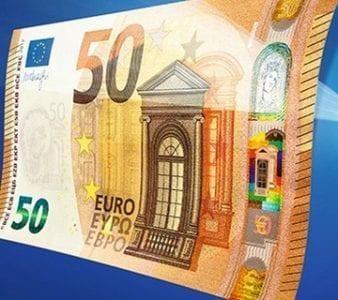
The above is a NEW 50€ note
Below is the old style
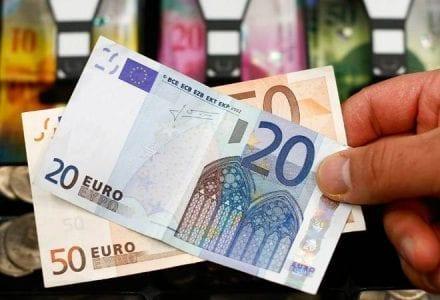 }
}
The new series - Europa series of euro banknotes
The Europa series of banknotes are being introduced gradually over several years. The four first banknotes in the new series, the €5, €10, €20 and €50, started circulating in 2013, 2014, 2015 and 2017 respectively. The €100 and €200 were unveiled on 17 September 2018 and will start circulating on 28 May 2019. They will complete the issuance of the Europa series.
The ECB has decided to stop producing the €500 banknote, although the first series €500 remains legal tender.
Europa
The new banknotes are called the Europa series because two of their security features contain a portrait of Europa. This figure from Greek mythology was included in the new euro banknotes because it has an obvious link to the continent of Europe and also adds a human touch to the banknotes. The image of Europa was taken from a vase in the Louvre in Paris.
Why new banknotes?
The ECB and the national central banks (NCBs) of the Eurosystem are responsible for the integrity of euro banknotes. That’s why they have developed a second series of euro banknotes with enhanced security features which keep the banknotes secure and maintain public confidence in the currency.
Keeping ahead of counterfeiters
The new euro banknotes benefit from advances in banknote technology. The new security features offer better protection against counterfeiting.
The Eurosystem’s research and development strategy states that euro banknotes need to be “self-defending”, thereby making life difficult for counterfeiters. Banks, professional cash handlers and the public need to be able to recognise counterfeit banknotes; they thus help to support the Eurosystem’s anti-counterfeiting strategy.
Tough and longer-lasting
The new euro banknotes are also more durable than the first series. This means that the banknotes will need to be replaced less frequently, thereby reducing costs and the impact on the environment. That’s important, especially for the €5 and €10 banknotes, as they change hands more often than the other notes.
Parallel circulation of banknotes of the first series and of the Europa series
The first series of euro banknotes will continue to be issued alongside the Europa series of notes until the remaining stocks have been used up. They will then be gradually phased out. The date when the first series of euro banknotes ceases to be legal tender will be announced well in advance. However, the banknotes of the first series will always retain their value: they can be exchanged for an unlimited period of time at the Eurosystem NCBs.
How to spot a FAKE
Feel - The printing process used gives the banknotes an unmistakable touch and a firm and resistant texture.
Look - The watermark and the safety thread become visible. On the €20, €50, €100 and €200 banknotes, the portrait window can also be seen.
Tilt - The silvery stripe reveals a portrait of Europa in a transparent window and the emerald number displays an effect of the light that moves up and down.
Additional features The additional security features of the banknote need to be checked with special devices which all major shops and of course banks have.
Fake Euro notes and coins
What should I do if I suspect a banknote is fake?
If you are handed a banknote and you think it’s fake after using the FEEL, LOOK and TILT method, then it probably is fake and you shouldn’t accept it. If you think you already have a counterfeit banknote, you should immediately inform the police or the relevant national authorities.
It is a criminal offence to pass on a banknote which you believe or know is a counterfeit. Fake banknotes are completely worthless, you will receive no compensation for accepting a fake banknote.
To double-check the banknote, you can also take it to your nearest bank. All banks have special cash handling equipment which can detect fake notes. Try to remember who gave you the banknote and where. This information can be invaluable in helping to track down counterfeiters.
FAKE COINS - Always check your change.
Fake/counterfeit coins may be in circulation in the Alicante/Elche area. these can easily be confused with the real 2€ coins as at first sight the fake coins look very similar as the recent reproduction method uses minting techniques similar to those which are used to make the legitimate coins. Although the weight is different (they are much lighter) also, the thickness of the edge and the diameter do not meet the technical specifications of legal tender coins, these also have slight defects on the face and the edge and will sound different when knocked together.

Not fake as such but check your change as sometimes the South African "Rand" which is only worth cents are passed off as 2€ coins.
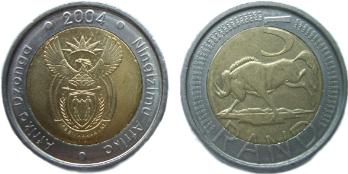
Guardia Civil urge people to check their change as a large number of Egyptian pound coins which are similar in size to the 2 Euro coin are being circulated. These coins have a face value of around 49 cents.
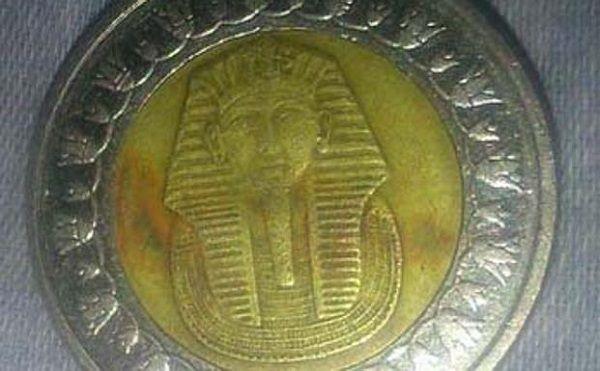
Other coins to watch out for - Moroccan coins, called dirhams, are equivalent to 50 cents in Europe and resemble those of two euros. In Turkey, the liras that they say are also worth two euros do not reach 32 cents in Europe and, for example, the 20 Jamaican dollars that resemble the 1-euro coins do not reach 13 cents.
Mexican 5 peso coins at a glance they are almost identical to our 2 euro coins, but are only worth 24 cents, meaning you are well out of pocket if fooled!
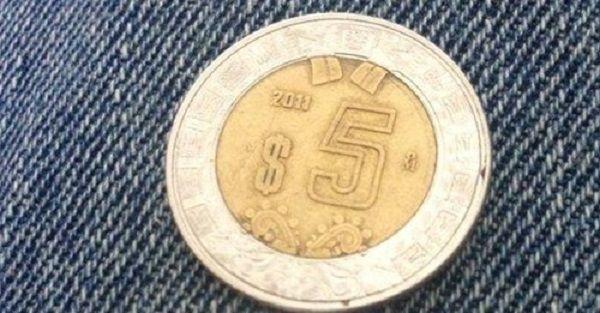
Remember to check your change.




